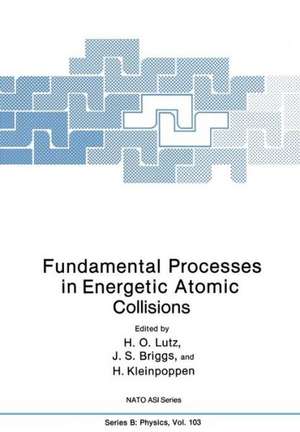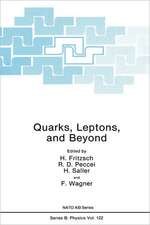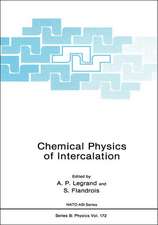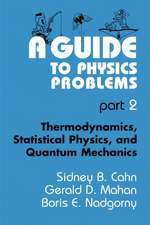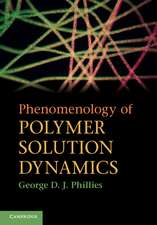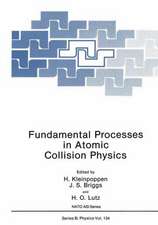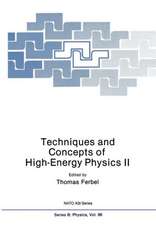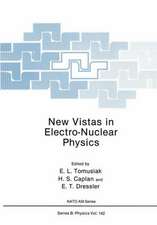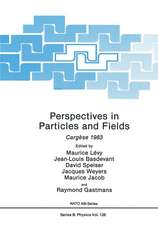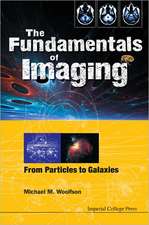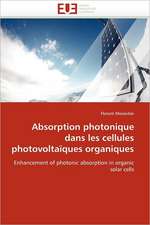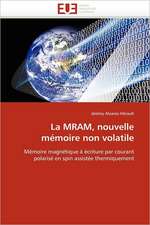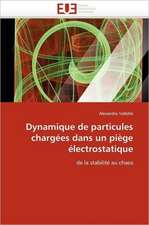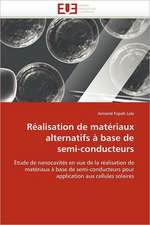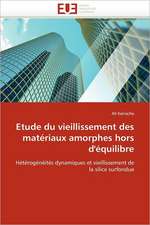Fundamental Processes in Energetic Atomic Collisions: NATO Science Series B:, cartea 103
Editat de H.O. Lutz, J.S. Briggs, B. Kleinpoppenen Limba Engleză Paperback – 27 feb 2014
Din seria NATO Science Series B:
- 5%
 Preț: 375.70 lei
Preț: 375.70 lei - 5%
 Preț: 369.29 lei
Preț: 369.29 lei - 5%
 Preț: 720.84 lei
Preț: 720.84 lei - 18%
 Preț: 1406.03 lei
Preț: 1406.03 lei - 5%
 Preț: 373.33 lei
Preț: 373.33 lei - 5%
 Preț: 723.78 lei
Preț: 723.78 lei -
 Preț: 391.79 lei
Preț: 391.79 lei - 5%
 Preț: 1445.00 lei
Preț: 1445.00 lei - 5%
 Preț: 380.61 lei
Preț: 380.61 lei - 5%
 Preț: 1103.75 lei
Preț: 1103.75 lei - 5%
 Preț: 711.72 lei
Preț: 711.72 lei - 5%
 Preț: 1414.08 lei
Preț: 1414.08 lei - 18%
 Preț: 957.44 lei
Preț: 957.44 lei - 5%
 Preț: 723.21 lei
Preț: 723.21 lei - 5%
 Preț: 727.44 lei
Preț: 727.44 lei - 5%
 Preț: 1117.46 lei
Preț: 1117.46 lei - 5%
 Preț: 1423.55 lei
Preț: 1423.55 lei - 5%
 Preț: 366.56 lei
Preț: 366.56 lei - 5%
 Preț: 1116.21 lei
Preț: 1116.21 lei - 5%
 Preț: 1106.33 lei
Preț: 1106.33 lei - 5%
 Preț: 1107.77 lei
Preț: 1107.77 lei - 5%
 Preț: 1098.48 lei
Preț: 1098.48 lei - 5%
 Preț: 715.71 lei
Preț: 715.71 lei - 5%
 Preț: 1428.71 lei
Preț: 1428.71 lei - 5%
 Preț: 2004.54 lei
Preț: 2004.54 lei - 5%
 Preț: 724.70 lei
Preț: 724.70 lei - 5%
 Preț: 1438.38 lei
Preț: 1438.38 lei - 5%
 Preț: 1109.23 lei
Preț: 1109.23 lei - 5%
 Preț: 1414.64 lei
Preț: 1414.64 lei - 5%
 Preț: 1284.75 lei
Preț: 1284.75 lei - 5%
 Preț: 1023.26 lei
Preț: 1023.26 lei - 5%
 Preț: 388.12 lei
Preț: 388.12 lei - 5%
 Preț: 1104.48 lei
Preț: 1104.48 lei -
 Preț: 383.93 lei
Preț: 383.93 lei - 5%
 Preț: 718.46 lei
Preț: 718.46 lei - 5%
 Preț: 1113.63 lei
Preț: 1113.63 lei - 5%
 Preț: 369.45 lei
Preț: 369.45 lei - 5%
 Preț: 1108.72 lei
Preț: 1108.72 lei - 5%
 Preț: 1107.77 lei
Preț: 1107.77 lei - 5%
 Preț: 1297.99 lei
Preț: 1297.99 lei - 5%
 Preț: 1123.87 lei
Preț: 1123.87 lei - 5%
 Preț: 718.65 lei
Preț: 718.65 lei - 5%
 Preț: 2011.46 lei
Preț: 2011.46 lei - 5%
 Preț: 721.40 lei
Preț: 721.40 lei
Preț: 416.05 lei
Nou
Puncte Express: 624
Preț estimativ în valută:
79.64€ • 86.53$ • 66.94£
79.64€ • 86.53$ • 66.94£
Carte tipărită la comandă
Livrare economică 21 aprilie-05 mai
Preluare comenzi: 021 569.72.76
Specificații
ISBN-13: 9781461337836
ISBN-10: 1461337836
Pagini: 688
Ilustrații: XI, 675 p.
Dimensiuni: 170 x 244 x 36 mm
Greutate: 1.08 kg
Ediția:Softcover reprint of the original 1st ed. 1983
Editura: Springer Us
Colecția Springer
Seria NATO Science Series B:
Locul publicării:New York, NY, United States
ISBN-10: 1461337836
Pagini: 688
Ilustrații: XI, 675 p.
Dimensiuni: 170 x 244 x 36 mm
Greutate: 1.08 kg
Ediția:Softcover reprint of the original 1st ed. 1983
Editura: Springer Us
Colecția Springer
Seria NATO Science Series B:
Locul publicării:New York, NY, United States
Public țintă
ResearchCuprins
Fundamental Processes in Energetic Atomic Collisions.- Fundamental Processes in Atomic Collision Physics.- Anisotropy of Collision Excited States.- Atomic Photoionization.- Electron and Positron Scattering.- Coupling of the Radiation Field to the Electron-Atom Collision System.- The Radiative Decay of Inner Shell Vacancies.- Electron Decay Processes.- Techniques of High Resolution Auger Electron and X-Ray Spectroscopy in Energetic Ion Atom Collision.- Theory of Coulomb Excitation and Ionization.- Electron Capture in Ion-Atom Collisions.- The Molecular Approach to Energetic Atomic Collisions: Specific Aspect of Outer Shell Collisions.- Molecular Treatment of Atomic Collisions (Inner Shells).- Coincidence Techniques in High Energetic Heavy Ion Atomic Physics.- Symposium on Coherence and Correlation in Atomic Collisions.- Threshold Laws.- Spin Dependent Threshold Laws and Ionization Asymmetries in Electron-Atom Collisions.- Correlation Effects in (e,2e) Processes.- Shapes and Orientation in Collisionally Excited Atoms: A Comment on Density Matrices, Coordinate Frames and Coherence.- Development and Analysis of Electron-Photon Angular Correlations from Electron Impact Excitation of Atoms.- Ion-Photon Angular Correlations in Slow Atomic Collisions.- Vector Polarization Analysis for Quasi-Two-Electron Systems: Mg-Inert Gas Collisions.- Autoionization Processes and Alignment in Atomic Collisions.- Alignment in Inner Shell Processes.- Symposium on New Aspects in Atomic Collisions.- Laser Effects in Atomic Collisions.- Spin Effects in Atomic Collision Processes.- Inelastic Scattering Processes with Polarised Particles.- Highly Charged Recoil Ions.- Electron Excitation and Positron Emission in Quasi-Molecular Collisions of very Heavy Ions.- Summary.- Summary Lecture.- Participants.
